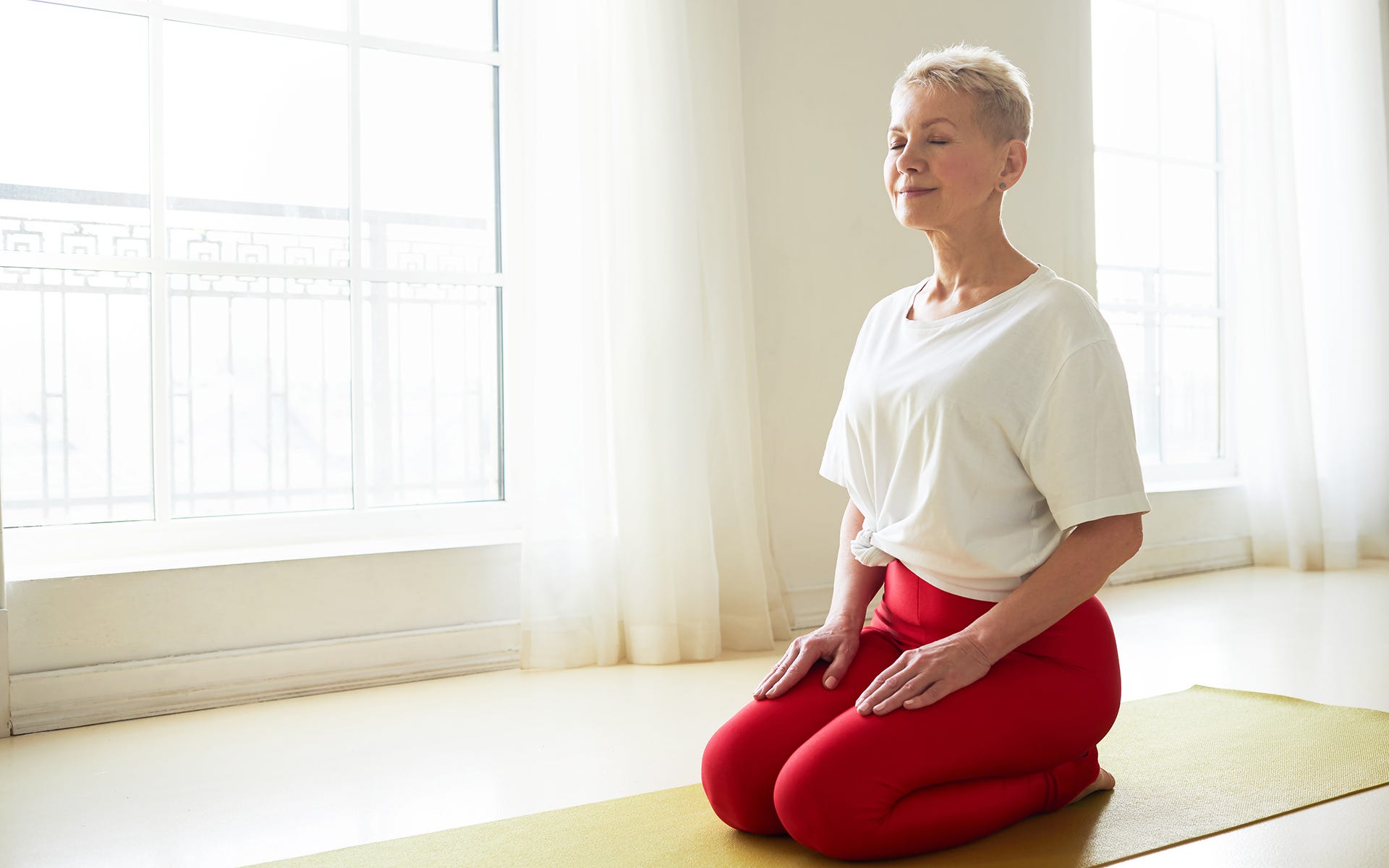
The start of the menopause is simply defined as when a woman has not had a menstrual period for 12 months.[1] However, in reality the experience is often more complicated, with women facing a number of physical changes, including hot flushes and night sweats, as well as emotional symptoms, such as feelings of irritability or anxiety. Learn more about the stages of the menopause and what you can expect.
When does menopause start?
The average age for entering the menopause is 51,[1] however, it’s normal for menopause to start between 45-55 years.[2] About 1% of women experience ‘premature menopause’ before the age of 40.[1] Menopause lasts for about three to six years, after which the ‘post-menopause’ period commences and symptoms start to disappear.
What is perimenopause?
Prior to commencing the menopause, there is a period of time called the ‘perimenopause’. On average, this lasts for three to four years and ends once a woman has been without a period for 12 months (it’s advised to still use contraception during this 12-month period).[3, 1]
During perimenopause, the supply of mature eggs in a woman's ovaries diminishes and ovulation becomes irregular. At the same time, the production of estrogen and progesterone decreases. It is this big drop in estrogen levels that causes most of the symptoms associated with menopause.[4]
An early sign of perimenopause is an irregular menstrual cycle, and the most common symptoms are hot flushes and night sweats, which are experienced by an estimated 35%–50% of perimenopausal women.[3] Other symptoms include sleep disturbances (40% of perimenopausal women), mood swings (10%–20%) and vaginal dryness.[3]
Symptoms of the menopause
Menopause happens once your reproductive hormones change and there are no eggs left in your ovaries. About 20% of women go through menopause without experiencing symptoms, while 60% have mild to moderate symptoms.[2] The remaining 20% have severe symptoms that interfere with their daily life.[2] Symptoms can also be influenced by external factors, such as your stage of life and general health and wellbeing, and they generally fall into either physical or emotional categories. The national not-for-profit organisation, Jean Hailes for Women’s Health, lists the most common symptoms as:
Physical symptoms of menopause:
- Hot flushes and night sweats
- Sleep problems
- Sore breasts
- Itchy, crawly or dry skin
- Exhaustion and fatigue
- Dry vagina
- Loss of sex drive (libido)
- Headaches or migraines
- Aches and pains
- Bloating
- Urinary problems
- Weight gain due to a slower metabolism
Emotional symptoms of menopause:
- Feeling irritable or frustrated
- Feeling anxious
- Difficulty concentrating
- Forgetfulness
- Lowered mood
- Mood swings
Often, symptoms can impact and compound each other. For example, experiencing a hot flush in public may increase anxiety, while sleep problems can lead to you feeling irritable with a low mood.
Managing menopause symptoms
Talk to your healthcare professional about potential medical options for managing menopause symptoms. You can also try self-management to help alleviate symptoms, with the following suggestions:
Hot flushes and night sweats
Stress can exacerbate hot flushes, so try to reduce your stress levels and consider relaxation techniques such as yoga, which has been shown to help alleviate this.[2] Wear lightweight, loose-fitting clothing and carry a hand fan or water spray bottle.[2] Avoid foods and beverages that may give rise to hot flushes, like spicy foods, alcohol, coffee, tea, and other hot beverages, and drink a glass of cold water when you feel one coming on.[4]
Emotional symptoms
Talk about your feelings to a trusted person and try keeping a journal. Explore relaxation techniques – such a meditation or yoga – which you can practice when you’re experiencing low emotions. If you are feeling anxious or stressed, try to identify the cause of the feeling and rate it out of 10 in terms of its severity, in order to help put it into perspective. Don’t brush off your feelings as being silly or crazy – accept them and be kind to yourself.
General wellbeing
Your body and life are going through huge changes during menopause, so try to manage your overall wellbeing by practicing healthy habits. Aim to consume a well-balanced diet with increased calcium intake, as the body’s decline in estrogen production can affect the amount of calcium in your bones.[1] Exercise regularly with a combination of cardio and strength training, to maintain fitness, bone health and a healthy weight. Try and ensure you have opportunities to rest, especially if sleep is a struggle.
You can also consider support in the form of a supplement, such as Swisse Ultiboost Menopause Balance, which contains black cohosh to help relieve hot flushes associated with menopause. It also contains calcium to support the body’s increased calcium needs, which may assist in the prevention of osteoporosis when dietary intake is inadequate.
Always read the label and follow the directions for use.
References:
- Peacock K, Ketvertis KM. Menopause. [Updated 2022 Feb 2]. In: StatPearls [Internet]. Treasure Island (FL): StatPearls Publishing; 2022 Jan-. Available from: https://www.ncbi.nlm.nih.gov/books/NBK507826/
- About menopause. Jean Hailes for Women’s Health. https://www.jeanhailes.org.au/health-a-z/menopause/about-menopause. Accessed September 5, 2022.
- Perimenopause: Rocky road to menopause. Harvard Health. https://www.health.harvard.edu/womens-health/perimenopause-rocky-road-to-menopause. Published August 9, 2022.
- Introduction to Menopause. John Hopkins Medicine. https://www.hopkinsmedicine.org/health/conditions-and-diseases/introduction-to-menopause. Accessed September 5, 2022.
